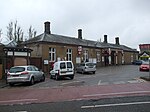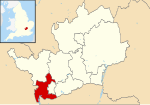The Royal Masonic School for Girls
The Royal Masonic School for Girls (RMS) is an independent school in Rickmansworth, Hertfordshire, England, with day and boarding pupils. The school was instituted in 1788, with the aim of caring for the daughters of poor Freemasons. In 1978, the school opened to girls beyond the daughters of non-freemasons.The school opened in 1789 with fifteen pupils in Somers Town, St Pancras, Middlesex. The school has moved between premises three times, twice within London and in 1934 to Rickmansworth in Hertfordshire, where it still is today. The Royal Masonic School for Girls is a day school for girls 4–18 and a boarding school for girls 7–18. A nursery opened in 2009 for boys and girls aged 2–4.
Excerpt from the Wikipedia article The Royal Masonic School for Girls (License: CC BY-SA 3.0, Authors).The Royal Masonic School for Girls
Nightingale Road, Three Rivers The Cedars Estate
Geographical coordinates (GPS) Address Phone number External links Nearby Places Show on map
Geographical coordinates (GPS)
| Latitude | Longitude |
|---|---|
| N 51.647777777778 ° | E -0.47333333333333 ° |
Address
Royal Masonic School for Girls
Nightingale Road
WD3 4HF Three Rivers, The Cedars Estate
England, United Kingdom
Open on Google Maps








